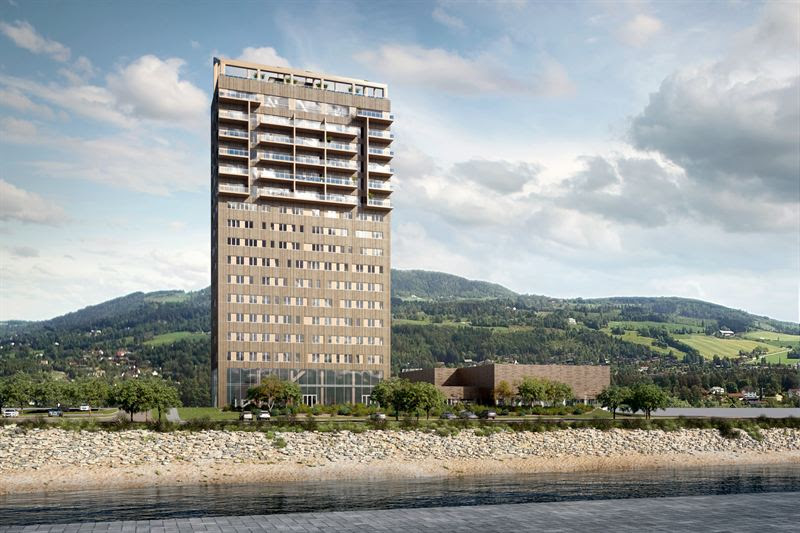In April, the construction of The Mjøsa Tower began. The development is expected to be completed in March 2019 and is also expected to be the world’s tallest wooden building. Measuring in at more than 80 meters high, the Norwegian building project will be a beacon for the ways wood can be used as a substitute for concrete when building.
The 18 storey building has been designed for use as apartments, a hotel and offices. The innovative project will be making the most of a product that is abundant in the Nordic countries: wood.
A more traditional building material for high-rises is concrete, which is heavy and not very environmentally friendly. The Mjøsa Tower will be created with lighter materials, glulam, CLT and Metsä Wood’s Kerto® LVL. Wood being the lighter material means that less transportation equipment is needed and the time needed to carry out construction work could be significantly reduced.
Kerto® LVL, or laminated veneer lumber, is made with cross-bonded veneer panels, with enough strength to ensure that load-bearing capacity is reached. These panels are more specifically called Kerto-Q LVL and will be utilised in the flooring between the two storeys. These cross-bonded laminated panels hare known for being strong and durable and ideal as a flooring product.
Wood is also an ideal building material as there is the possibility of adjustments and corrections on site. So far, construction work on the tower is progressing at one storey a week and it has been estimated that using wood as opposed to concrete has shortened the construction time by 35 to 40%. Wooden material also means that the machinery required on site aren’t as heavy.
Wood is a common resource in the Nordic countries, and absorbs more carbon dioxide while growing than the quantities used in the product manufacture which makes it sustainable. Another issue around construction s fire safety, untreated wood chars when exposed to fire, and in doing so, protects itself against further damage.


